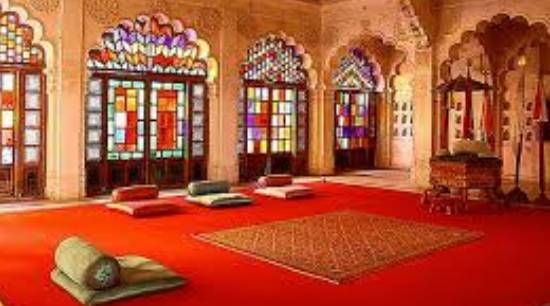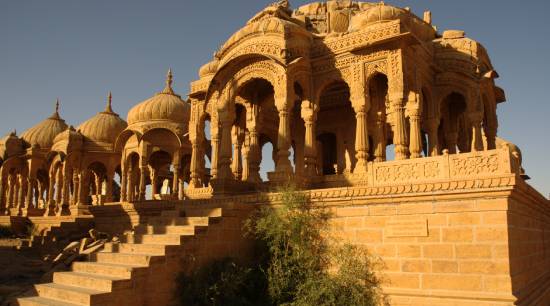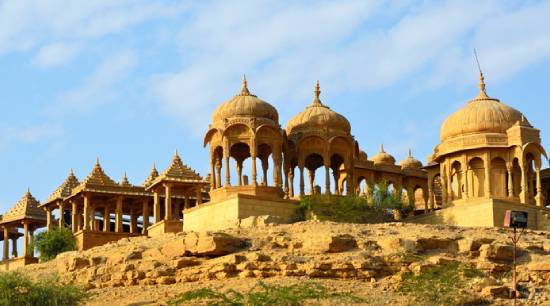Jaisalmer Fort
Jaisalmer Fort is situated in the city of Jaisalmer, in the Indian state of Rajasthan. It is believed to be one of the very few "living forts" in the world, as nearly one fourth of the old city's population still resides within the fort. For the better part of its 800-year history, the fort was the city of Jaisalmer. The first settlements outside the fort walls, to accommodate the growing population of Jaisalmer, are said to have come up in the 17th century.
Gadisar Lake
Set to the south of the city, Gadisar Lake is an unadulterated treat for one’s eyes and mind. Enjoy a calm boat ride on these waters as the sun sets to close a hectic day of sightseeing in peace. A number of shrines and pavilions dot the lake banks and a domed pavilion in the middle adds tremendously to the aesthetic appearance of the lake. A interesting fact about this lake is that its never dry as it is fed by the Indira Gandhi Canal. You can also buy bread and feed the numerous catfish to whom the Gadisar Lake is home sweet home.
Kothari's Patwa Haveli
The history of the Kothari’s Patwa Haveli dates back to early eighteenth century, when the patwas were struggling to set up their trade and business. On the advice of a priest at the Jain Temple, the patwa brothers left Jaisalmer with the intention of never returning (they were advised by the priest that their business could not flourish in Jaisalmer). The legend has it that the patwas were immensely successful thereafter and their business spanned across banking & finance, silver, brocade and opium trade.
Moti Mahal
The Salim Singh Ki Haveli has constructed about 300 years ago in 1815 and has been named after its owner, Salim Singh Mohta. This haveli was built out of the remains of an older haveli present here that belonged to the 17th century, near the Jaisalmer Fort. After a certain period of its construction, the Haveli was occupied by the Mehta family of Jaisalmer, which was said to be the most influential family of their time.
Bara Bagh Temple
Bara Bagh is situated on a small hill. The memorial chhatri cenotaphs have all been carved out of sandstone blocks, but have been built in at least four different sizes - for the ruling kings, their queens, their princes, and other royal family members. Each cenotaph has a marble slab with inscriptions about the deceased royal and a symbolic image of a man on a horse.A descendant of Maharawal Jaisal Singh, the founder of Jaisalmer State, Jai Singh II (1688–1743), commissioned a dam to create a water tank during his reign in the early 18th century. This made the desert green in this area.
Vyas Chhatri
If you think cremation grounds are the most boring of places, you should go to Vyas Chhatri in Jaisalmer, and see the grandeur of its memorials. The cenotaphs here are the most fabulous structures in Jaisalmer, and one of its major tourist attractions. Dedicated to Sage Vyas, who wrote the epic poem Mahabharata, Vyas Chhatri has beautiful memorials, and is a cremation ground for Brahmins.The yellow sandstone cenotaphs are built on raised platforms, with intricately designed chhatris on top of finely chiseled pillars.














